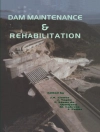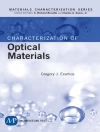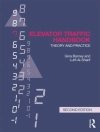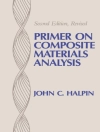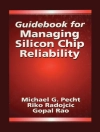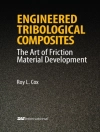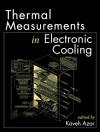According to the NACFAM (National Council for Advanced Manufacturing, USA) Sustainable Manufacturing is defined 'as the creation of manufactured products that use processes that are non-polluting, conserve energy and natural resources, and are economically sound and safe for employees, communities, and consumers.’ The book covers Sustainable Manufacturing techniques such as materials and manufacturing for renewable energies; clean manufacturing technology; ecological manufacturing; energy-efficient manufacturing; remanufacturing; recycling of materials; environmentally conscious design and manufacturing processes; sustainable advanced manufacturing systems; manufacturability in sustainable product design; education and training for sustainable manufacturing.
Spis treści
Preface ix
Chapter 1. Environmental Impact in Micro-device Manufacturing 1
Jong-Leng LIOW
1.1. Introduction 2
1.2. Role of LCA 7
1.3. Energy consideration in micro-manufacturing 14
1.4. Energy consideration in micro-end-milling manufacturing 22
1.5. Conclusions 28
1.6. References 29
Chapter 2. Cutting Tool Sustainability 33
Viktor P. ASTAKHOV
2.1. Introduction 33
2.2. Statistical reliability of cutting tools as quantification of their sustainability 37
2.3. Construction of the probability density function of the tool flank wear distribution with tool test results 50
2.4. Tool quality and the variance of tool life 58
2.5. The Bernstein distribution 59
2.6. Concept of physical resources of the cutting tool 67
2.7. References 76
Chapter 3. Minimum Quantity Lubrication in Machining 79
Vinayak N. GAITONDE, Ramesh S. KARNIK and J. Paulo DAVIM
3.1. Introduction 79
3.2. The state-of-the-art research for MQL in machining 84
3.3. Case studies on MQL in machining 90
3.4. Summary 104
3.5. Acknowledgments 105
3.6. References 105
Chapter 4. Application of Minimum Quantity Lubrication in Grinding 111
Eduardo Carlos BIANCHI, Paulo Roberto de AGUIAR, Leonardo Roberto da SILVA and Rubens Chinali CANARIM
4.1. Introduction 111
4.2. Minimum quantity lubrication 114
4.3. Results 122
4.4. Conclusions 169
4.5. Acknowledgments 170
4.6. References 170
Chapter 5. Single-Point Incremental Forming 173
Maria Beatriz SILVA, Niels BAY and Paulo A.F. MARTINS
5.1. Introduction 173
5.2. Incremental sheet forming processes 174
5.3. Analytical framework 179
5.4. FE background 187
5.5. Experimental 191
5.6. Results and discussion 195
5.7. Examples of applications 203
5.8. Conclusions 206
5.9. References 206
Chapter 6. Molding of Spent Rubber from Tire Recycling 211
Fabrizio QUADRINI, Alessandro GUGLIELMOTTI, Carmine LUCIGNANO and Vincenzo TAGLIAFERRI
6.1. Introduction 212
6.2. State of the art of tire recycling 215
6.3. Direct molding of rubber particles 221
6.4. Experimental results 225
6.5. Concluding remarks 233
6.6. References 234
List of Authors 241
Index 245
O autorze
J. Paulo Davim is Aggregate Professor in the Department of Mechanical Engineering of the University of Aveiro, Portugal and is Head of MACTRIB (Machining and Tribology Research Group). His main research interests include machining/manufacturing processes and tribology/surface engineering.


